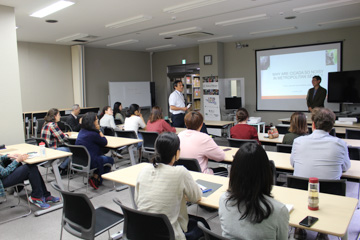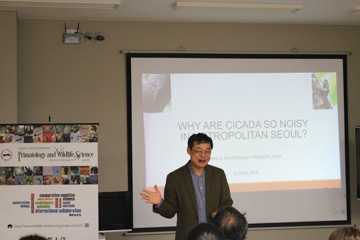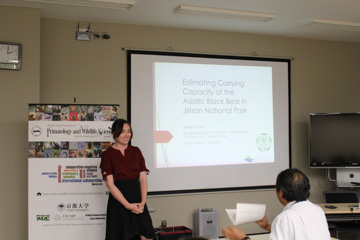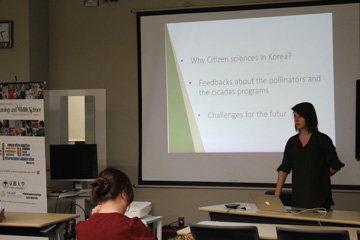April 24, 2018
WRC地下会議室


Division of EcoScience and Department of Life Science, Ewha Womans University
Why are cicadas noisy in Metropolitan Seoul?

1 Division of EcoScience, Ewha Womans University, Daehyun-dong 11-1, Seodaemun-gu, Seoul, 03760, Republic of Korea.
2 Species Restoration Technology Institute, Korea National Park Service, 53-1 Hwangjeon, Masan, Gurye, South Jeolla Province, 26466, Republic of Korea.
Modelling of a reintroduced Asiatic Black Bear population in South Korea with recommendations for future conservation

Divison EcoScience, Ewha Womans University, Seoul, Republic of Korea
Citizen science in Korea: stakes and challenges
Division of EcoScience and Department of Life Science, Ewha Womans University
Why are cicadas noisy in Metropolitan Seoul?
Back to Program ↑
1 Division of EcoScience, Ewha Womans University, Daehyun-dong 11-1, Seodaemun-gu, Seoul, 03760, Republic of Korea.
2 Species Restoration Technology Institute, Korea National Park Service, 53-1 Hwangjeon, Masan, Gurye, South Jeolla Province, 26466, Republic of Korea.
Modelling of a reintroduced Asiatic Black Bear population in South Korea with recommendations for future conservation
Back to Program ↑
Divison EcoScience, Ewha Womans University, Seoul, Republic of Korea
Citizen science in Korea: stakes and challenges
Citizen sciences has become a mainstream approach for collecting data on biodiversity or other environmental issues. The set-up of common species monitoring at large scales help researchers to address biodiversity issues and to set-up monitoring index to guide management policies while rising people's awareness about the stakes of biodiversity's conservation.
Throught several exemples of citizen science projects that have been developed in Korea for few years, we will see all the opportunities that the development of citizen science represents. If they are usefull to fill a lack of data at a country-scale, they contribute to the development of knowledges about ordinary biodiversity ecological processes. A survey among the observers showed that these programs could also be a way to develop a new relationship between citizen and the nature.
Back to Program ↑